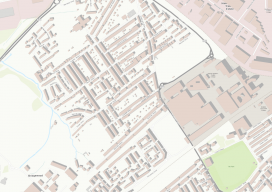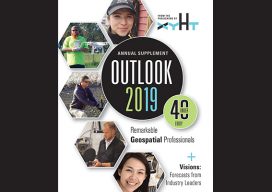Category Archives: Spatial IT/GIS

Where on Earth Is the Offset in ArcGIS Pro?
Life used to be nice and easy for us GIS guys. We used to roll out of bed, click start on our GIS software, go back to bed for an hour, and then think about making a nice simple 2D map. Then, all of a sudden everyone starts talking about 3D GIS and being able...

Gabriela Olekszyk
Surveyor & GIS Analyst, Woods Auckland New Zealand Gabriela Olekszyk began her geomatics/geospatial career in Western Australia, surveying for mining concerns during vacation breaks while studying for a Bachelor of Surveying Technology at Curtin University. Western Australia has become a crucible for geomatics: a vast land (almost four times the size of Texas), sparsely populated, but...

Matt Pietryszyn
Team Lead, Location Intelligence & Data Visualization, City of Brampton Ontario, Canada The City of Brampton in Ontario is on the leading edge of vibrant, geospatially charged communities; xyHt receives many nominations for 40 under 40 each year for folks in the connected geo-community there. Matt Pietryszyn received multiple nods, not only for his work with...

GIS in Higher Education
Given this column’s theme of the coordinated campus and educational implications for the GIS professional community, it seems fitting to ask: If you went to a postsecondary school, did you take a course in GIS? For more people than ever before, the answer is “yes.” GIS has long been a part of institutions of higher...

Kari Hicks
Senior GIS Analyst, Duke Energy Ohio, USA Duke Energy is one of the largest utilities in the U.S., with nearly eight million customers across multiple states in the Midwest and Eastern Seaboard. Like other utilities, Duke is seeking to modernize and provide affordable, reliable, and greener energy for growing markets through improved engineering efficiencies and...

Smart Access for 3D Cities
Above: A view from the OpenCities Planner online 3D city model web portal (hosted by Agency9) for Gothenburg, Sweden. A new skyscraper (now under construction) was added to provide planners and citizens a realistic idea of the visual impact of the proposed development. Credit for all images in this article: Bentley Systems. Today’s 3D city...
